Hi there,
The details:
I am in the throes of building my one room studio. The shell is already built and I'm now working on the inside stuff.
Approximate interior dimensions AFTER inside walls built:
Length: 23'
Width: 16'
Height: about 10' average(6:12 pitch roof, ridge parallel to long wall, rafters at 8' Peak at 12'3")
Approximate volume: 3500-3600 cu. ft.
I will be using this one room for:
All tracking-vocals, acoustic instruments, drums, piano, etc.
Mixing pop/acoustic/rock music.
A practice room for the band.
Home theatre via a projector.
The plan:
A live end, dead end situation, with the mixing desk at the dead end.
The monitors would be firing the length of the room.
Questions:
1-What are your thoughts on having a LEDE room for both tracking and mixing?
2-If favorable, what approximate ratio of live area to dead area? I was thinking the first 7' X 16' be the 'dead zone,' so about 1/3 of the space.
3-As I understand it, one of the aspects of a LEDE room is to diffuse the back wall of the live end. I have heard small rooms don't really benefit from diffusion. Is my room large enough?
4-Are there any major details that often trip up a novice that I should watch for?
5-If I have both options, in your experience, which instruments usually sound better recorded in which area(Live vs dead) or is the space big enough to matter?
Thanks for any input folks
Cheers
Keith
Comments
https://de.wikipedia.org/wiki/LEDE "By means of LEDE concept you
https://de.wikipedia.org/wiki/LEDE
"By means of LEDE concept you want in terms of reflections in the listening area (controlroom) the greatest possible initial time gap (initial time delay gap ITDG reach what the time must be between the arrival of the direct sound and the first strong reflection as long as possible). But nevertheless it should still give reflections to produce an envelope impression. It is thus inappropriate to absorb any reflections. To get them, yet to mitigate their effects in terms of a sound source location, the reflections are deliberately scattered."
A couple of my own thoughts on lede. It was a flavor of the year decades ago but like all systems that are developed, it becomes bastardized and at some point becomes a relic. I personally would stray from developing a "thing" just because that "thing" has a name and might have given birth to some creativity backin the day. Each room comes with it a unique sonic character...yours included.
But lets say your bound and determined to develop an accurate lede. The dead end is where the mixing position will be. Mixing or evaluating an instrument being recorded requires an accurate environment don't you think? And dead ain't accurate, unless your Dirty Harry and then it is your job to have accurately dead things all around you.
I do not want to have to check a mix in my truck stereo after mixing in a dead spot to figure out how much brightness I added to overcome the absorption...then go back and take it out, rinse and threepeat.
Firing along the long end of the room is good for sound growth but you also want the slanted ceiling to work with you in that the lower end should be at the mix end so the low frequency has a path to grow and develop from this lower end to the higher end.
So while it was a silver bullet in the late 80's for the high and mighty it wasn't something that had any staying power as a path to follow. For me, if a room has the characters already of a live end dead end then I would consider how can we exploit those natural conditions to meet an end that satisfies the journey. Otherwise you want some of the characteristics but not a strict diet.
For instance. The live end is where all the fun is happening. The guitars are wailing like a cat in heat outside yer window, pianos emit noise like your sweetheart being tickled in the Summer and bass guitars are sounding out a sultry hypnotic rhythm that makes you blush when you look over to the dancer prone on the piano lid. Yep..it is TOO live! So most often you have to have gobo's and adjustable sound shields ready to take the live out of the environment. So really, a live end is more like an micro lede. It should be able to be live but should be able to play dead on command.
"what approximate ratio of live area to dead area? "
At the mixing end, where the listeners head will be while sitting in the mixing chair, should be approx. (as a starting position) 38% of the overall length of the room from the wall that the mixing engineer will be looking at. With 23 feet that would put you at about 8 feet 9 inches from the wall with the monitors and the mixing engineers head forming an equilateral triangle(all legs being of the same length and at the same degree of bend).
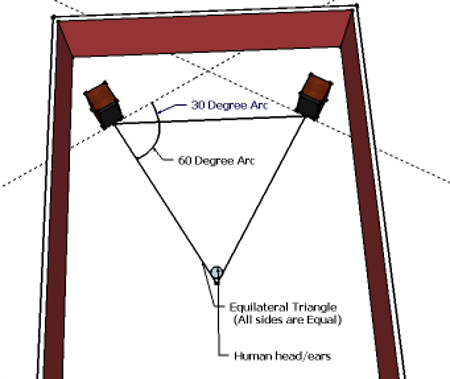 XXXXXXXXXXXXXXXX
XXXXXXXXXXXXXXXX
Let me clarify just a bit on this. When making adjustments to a mix you will be close up to the desk. You may move side to side tweaking outboard gear or what have you. But when you are thru with all of the things that require your hands you will want to have this position I mentioned available in order to establish sonically if you have made a good decision on what you have altered. So this takes up about ten feet of the room overall length wise. In any event you will use about 40% for mixing and 60% for the dance floor.
Per diffision:
https://en.wikipedia.org/wiki/Precedence_effect
Haas kicker
Many older LEDE ("live end, dead end") control room designs featured so-called "Haas kickers" - reflective panels placed at the rear to create specular reflections which were thought to provide a wider stereo listening area or raise intelligibility. However, what is beneficial for one type of sound is detrimental to others, so Haas kickers, like compression ceilings, are no longer commonly found in control rooms."
Ok I said all that to say this. The sonic signature of this room has yet to be characterized. But there are things you have to do directly that cannot be left undone.
Remove reflections behind monitors
Remove first reflection points, this includes the ceiling.
Low frequency absorption in the mix end.
These are the minimum...drop dead, we will not even bring up SBIR, things that need to be addressed in the mix end.
Then you want to measure the room with REW or similar to see what is happening in it. The measurements of 23 feet and 16 feet produce axial modes that are low enough(in the first order) that they should not be an immediate concern. The 23 foot length produces a 100Hz axial at the 4th order and the 16 foot length produces a 105Hz axial at the 3rd order, so there may be something there albiet a 5Hz degree mismatch.
And so I leave you and this old worn out year of 2016, with this:
http://www.voetmann-akustik.dk/50-Years-Of-Acoustic-Design-of-the-Sound-Control-Room
"Looking at control room design during all these years it seems to have been quite easy to introduce controversial ideas in the field, and also to get these ideas accepted as long as some overall principles are maintained. One overall principle is to keep strong symmetry, which is related to the balance of multi-channel recordings, another principle is to have a controlled, short reverberation time down to low frequencies. The importance of early sidewall reflections has yet to be discussed."
Basically it states that even the smart folks did it right, and it was wrong depending on the vantage point of the passing time.
Happy New Year
wow. All that and a bag of chips too. Thanks. I'll take all that
wow. All that and a bag of chips too. Thanks. I'll take all that into account.
I'm not stuck on the concept of LEDE, so that's why I'm asking here. It might be enough to just tame the reflections, do the best I can to control the bass end, and play around with the room a bit and then adjust after I've done some testing.
I work in a classic 80's lede room and I find it quite good. Th
I work in a classic 80's lede room and I find it quite good. The caveat to that room is it has a basically non existent sub bass and a steep roll off, I'm guessing around 60-55hz.
While I think Brien is right on, I will say in this room there is no need to check much in the car. You can actually (pretty much) 'mix to the room' and not mentally compensate. The imaging is exhaggerated but not too much, and panning and stereo placement is actually something relevant to work w. More than I can say about most other room/monitoring. The monitors are a bit bright for my taste, but the slight scoop you get, relative to them in the car is pleasing.
One thing to consider is most of these rooms were designed around the monitors themselves, in particular 813c's. Theses are archaic now and not accurate by today's high end main monitor standards, but you can easily mix on them.
Your monitors and amps have as much to do with the room as anything else, and the inclusion of a sub or not is something to consider at the design point.
Would I make an lede room now? No, but it sure as heck is fun.
I prefer a room with a larger sweet spot. Some designers including rod Gervias pretty much disregard the other spots in the room besides the sweet spot and I respect them.
I, if possible would prefer a room that had a wider listening area. Which is only possible on a limited basis. When you have two or 3 artists telling you to make adjustments it important they are hearing something relevant.
John H Brandt <- hope I spelled it right. Recently release a 10pg essay on a concept he calls the 'non environment room.' This addresses the issue of SBIR as well as some other shortcomings in other designs. I could be way off but I hink it was based off a guy by the last name of hidley' concept. Either way one of the key features of this room is a solid (i.e. Concrete) non resonant front wall, with wich the monitors are in or against. It's very much worth looking into.
Your shell is a decent size to promote accurate bass response which is the main thing to tackle. Trap depths of 2-4' will help tremendously. And should keep you out of the car, and replacement speaker store.
As you control the basic reflections, you can determine your prefered liveliness or deadness to taste to a certain extent. The focus overall is even decay, or even decay with the prefered roll off curve. Perhaps natural decay is the word?? I'm not an expert (yet).
Just for fun here's a couple pics of one of the studios I work in frequently. I had the great opportunity to re-build this one from the studs out. That window is a highlight of my portfolio even tho it doesn't look like much. I have since finished the window stops which are half done on the pic. I also have installed the stained 1" wide lattice to cover the seams in the fabric since then.
One thing to notice is that each of these boards has is beveled (which may have a very minor effect) and the spacing is quasi random bettween 1/8"-1/2" roughly.
If your interested in the lede route, I can probably dig up some pictures which are somewhere on an sd card packed in a tote w the rest of my belongings. (I didn't say the pay was great lol) backup drives are essential!!!!
Good luck, I'm looking forward to following your design/build of the treatment.
"John H Brandt The Non Environment Control Room is the product
"John H Brandt <- hope I spelled it right. Recently release a 10pg essay on a concept he calls the 'non environment room"
The Non Environment Control Room is the product of Thomas Hidley and Phillip Newell. It was a controversial design, much like the trademarked LEDE. Since the proposal was circa 1991, it has surely had some thought applied to it by greater minds than ours. Which is not to suggest Mr. Brandt is a greater mind than ours :)
The LEDE, by the way, is a design. It is not one end of a room live with little to no acoustical treatment and the other end saturated with acoustical treatment.
At the end of the day, the LEDE is too costly AND detail intensive for the traditional musician turned weekend acoustical designer. The RFZ (reflection free zone) is the current poison of choice for a control room and even it has to have much detail applied, but can be handled without a degree in math.
Also, the LEDE is in fact mostly a control room. In the case of the original poster, took-the-red-pill is trying to develop one room for tracking and control which is outside of the scope of the LEDE in the original form.
Brien, That last statement of yours is significant, I am trying
Brien, That last statement of yours is significant, I am trying to develop one room that gives me decent results while tracking as well as mixing. I am not stuck on a lede concept, and after this discussion, will likely head in a simpler direction.
I think I will concentrate on controlling bass first, then reflections and flutter, and then tweak from there. I'll keep the control room end of things a tad bit more absorbant, and keep the middle and other end a tad bit more reflective.
Kmetal. Thanks for the input and pictures. I've been scoping out John Sayers' site and every studio he designs has slat resonators, similar to what you show here. Apparently they absorb as well as scattering, so I may experiment with that as well.
Any other input that will help me achieve a decent sounding tracking and mixing space would be appreciated. And in the mean time I'll keep reading and researching.
Cheers mates.
Keith.
Good thread. I'm learning here. Looking for more info on LEDE
Good thread. I'm learning here.
Looking for more info on
LEDE
The originator Chips Davis: http://www.aes.org/events/137/presen
The originator Chips Davis: http://www.aes.org/events/137/presenters/?ID=2637
His personal resume: http://www.chips-davis.com/index.html
He and the LEDE are mentioned in Phillip Newells "Recording Studio Design" V=onepage&q=Chips%20Davis%20lede&f=false" rel="nofollow">https://books.google.com/books?id=tbEcAAAAQBAJ&pg=PA444&lpg=PA444&dq=Chips+Davis+lede&source=bl&ots=8KZuFv5dyO&sig=BFhnLq9VffDtR_mrOHn9VCWf620&hl=en&sa=X&ved=0ahUKEwiH1YbfpY_KAhXJmR4KHYU9A7kQ6AEIWjAMV=onepage&q=Chips%20Davis%20lede&f=false
Heck just google it Q=Chips+Davis+lede" rel="nofollow">https://www.google.com/webhp?sourceid=chrome-instant&ion=1&espv=2&ie=UTF-8Q=Chips+Davis+lede
Just for ideas, here's some rooms I've designed and built. Home
Just for ideas, here's some rooms I've designed and built.
Home theater rough conceptual stage sketch
Same theater final draft bass trap and front end sketch. Rear side is fairly live w Windows a Kitchette, Ect like in the above one. Still has some absorption tho to keep a mashup dead side/rfz. It's neither one, but steals from both.
Booth at triad. The ceiling is only slanted from left side up to right, the weirdness is the panorama on my iPhone. Booth has all splayed walls. Roughly 9x11. Barely fits 5pc kit but it can, and does sound good when doing so.
Control room at triad. Haven't tested it officially, but bass response is honest. Something a little bit off in the 300hz range. Could be the console reflections, and/or the hard drywall/OSB backing on the cloud wich I strongly disagreed with, but was overruled. That thing took six men to hoist.
Front wall above. Naked.
took-the-red-pill, post: 434954, member: 21836 wrote: Interestin
took-the-red-pill, post: 434954, member: 21836 wrote: Interesting.
I will certainly keep you gents posted as things progress. I will probably end up with a bastardization of a few different ideas, as is my wont.
It might be a while, as it will be a while til I have pics, etc.
Cheerios
K
Just get a handle on an RFZ (reflection free zone) for your mix area. That is going to be the easiest route to get you set up. Then you can deal with the other end. Might wind up with a 50/50 situation where 50% of the area is treated and 50% is not, or specific absorption depending on the area left and what it is you are doing. Free standing or movable gobos are always a good way to get some seperetion between open mics and amps.
Keep us posted.
Couple more lol. This one is the only one that didn't get built.
Couple more lol. This one is the only one that didn't get built. The client couldn't swing the estimated 35-50k. This had pre existing rooms. So the plan was to cut a hole in the rear wall of CR, make the adjoining room a large bass trap and cover the hole. Front wall completely absorbative, sides and ceilings mirror points absorbative, whole thing covered w fabric for looks. Slats for resonating and decoration.
Excuse the bowl and glass this was an actual picture of he screen lol
I sooooo wish I got to build that booth, it's the my favorite interior deco I've drawn so far. Oh there's always time.
The bass trap the size of a room lol. (Thanks phill Greene)
A drawing of the LEDE room in the other post, found this on Google! Score. Normandy ended up a 'modified' lede. They made the front wall reflect 6db more bass, so they could use less power on the amplifiers pushing lows, giving them more headroom.
Anyway hope this sparks some ideas for ya man. Looking forward to seeing how your project comes together.!!




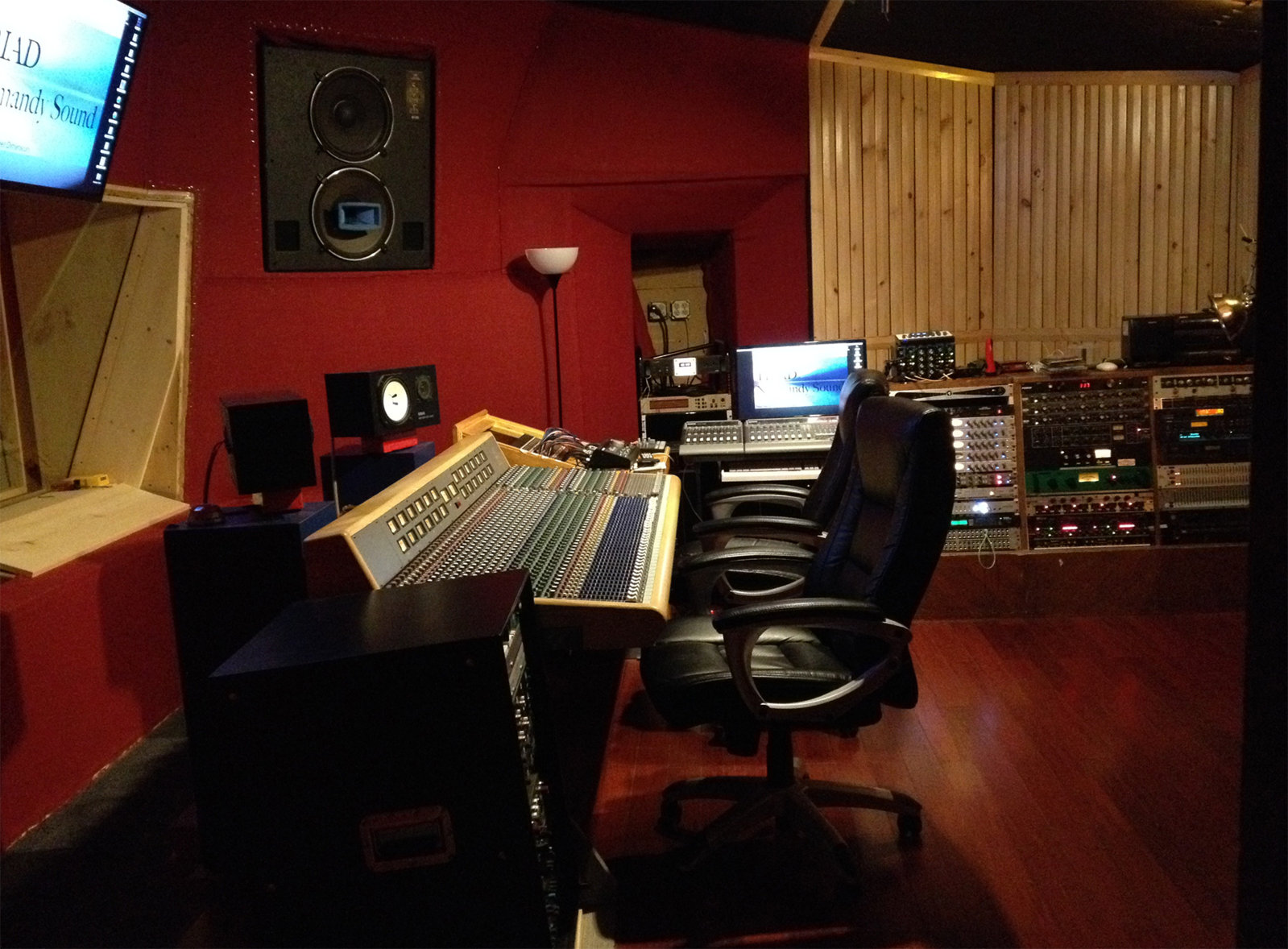
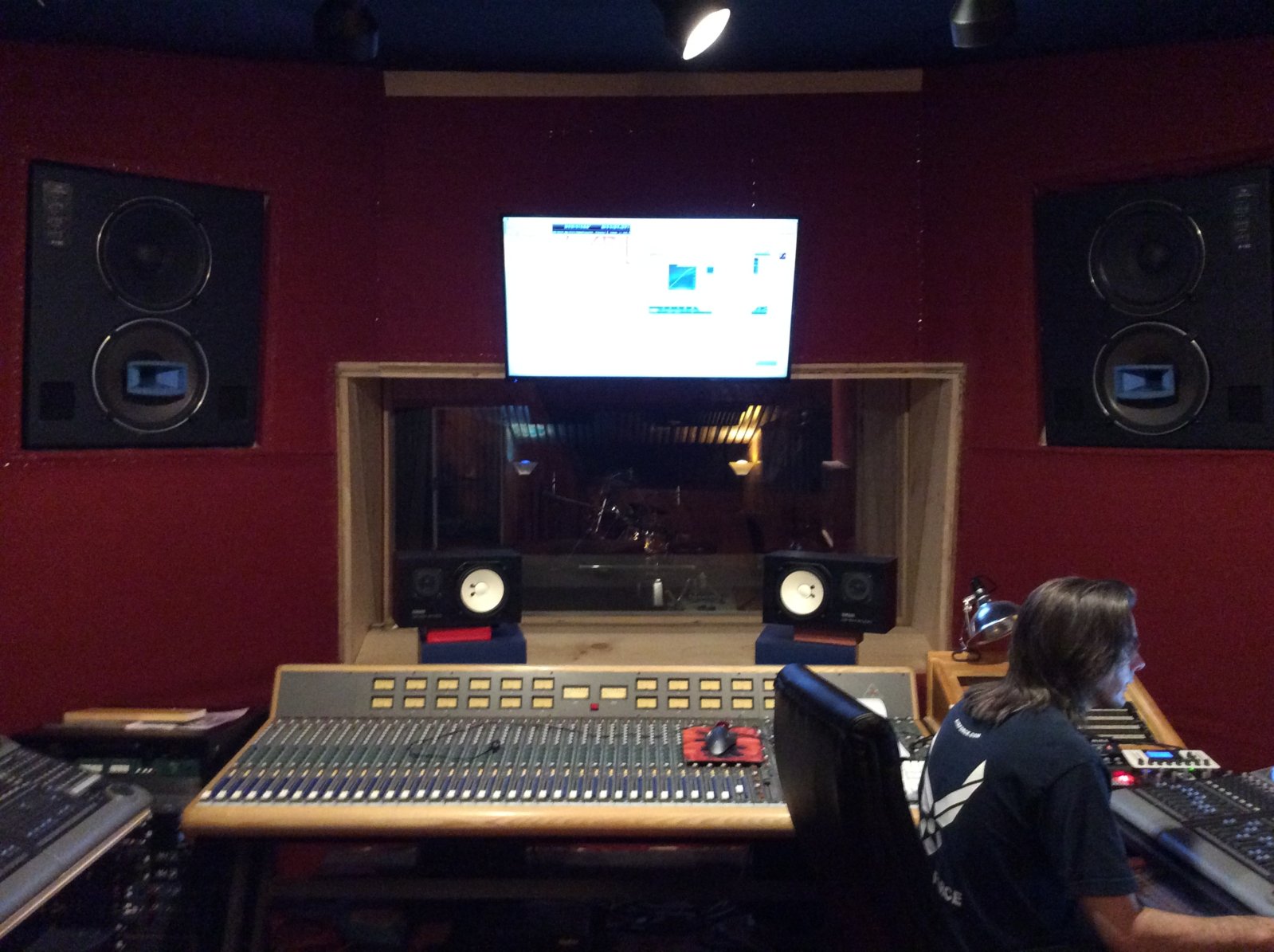
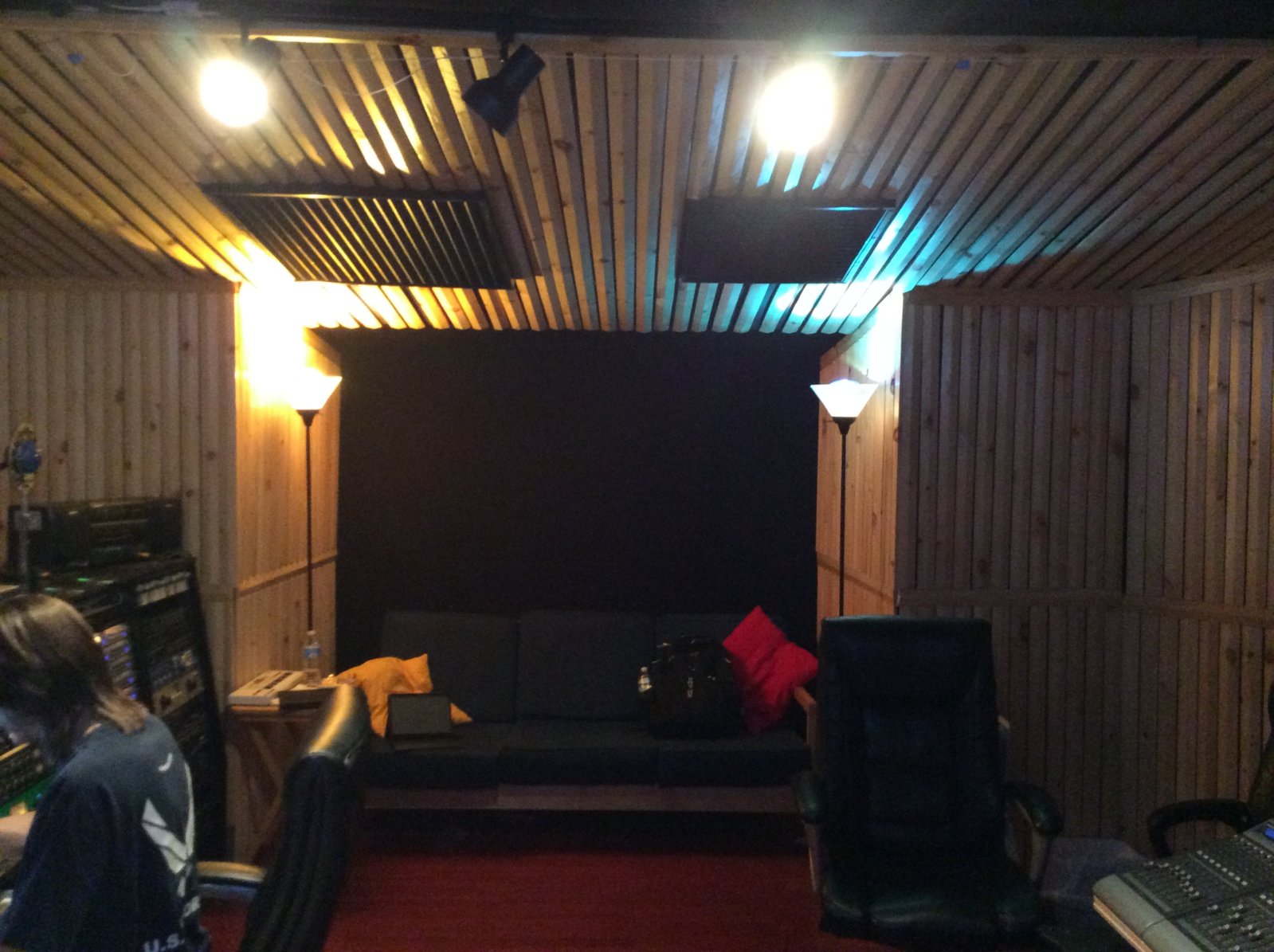

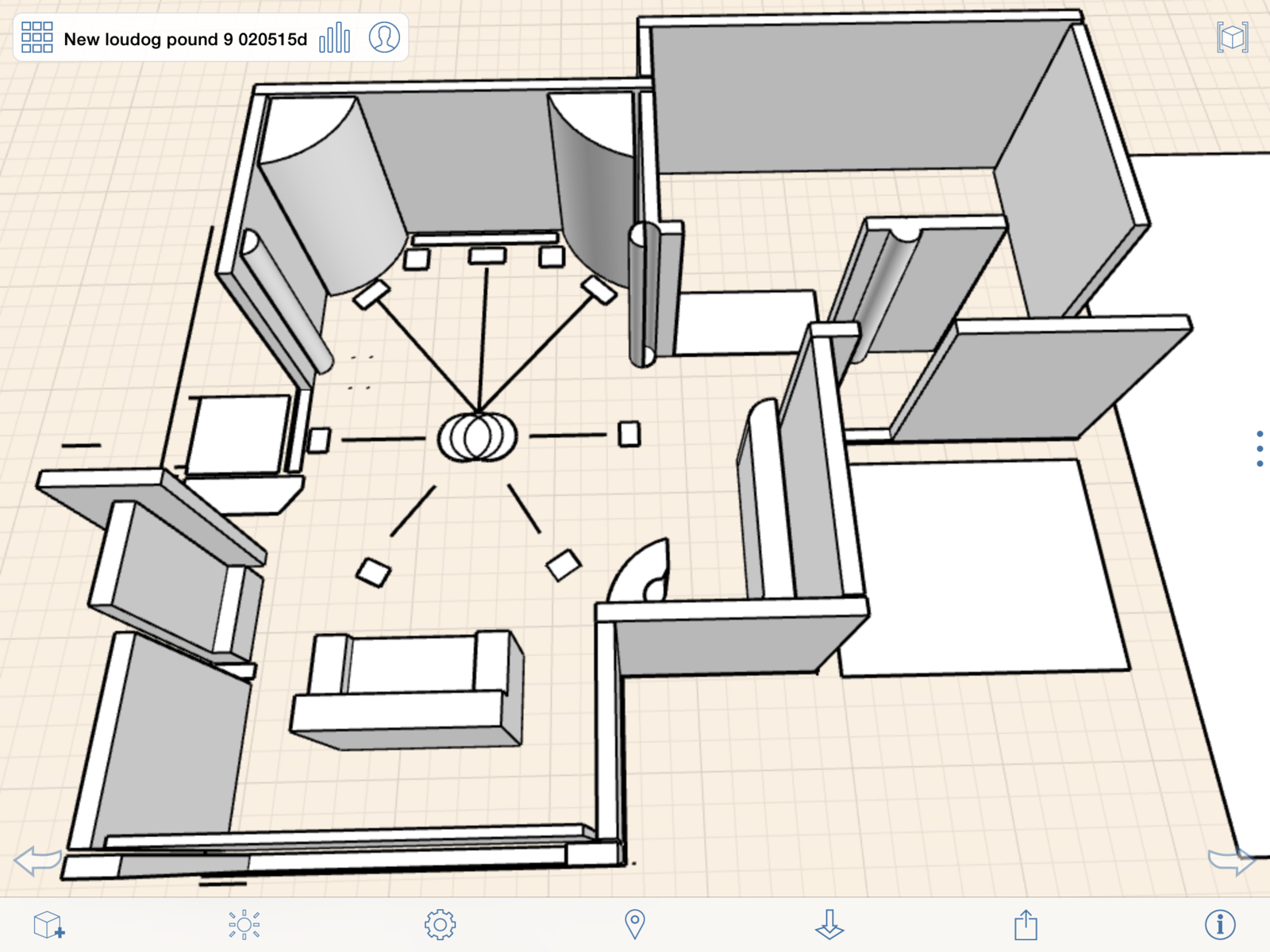

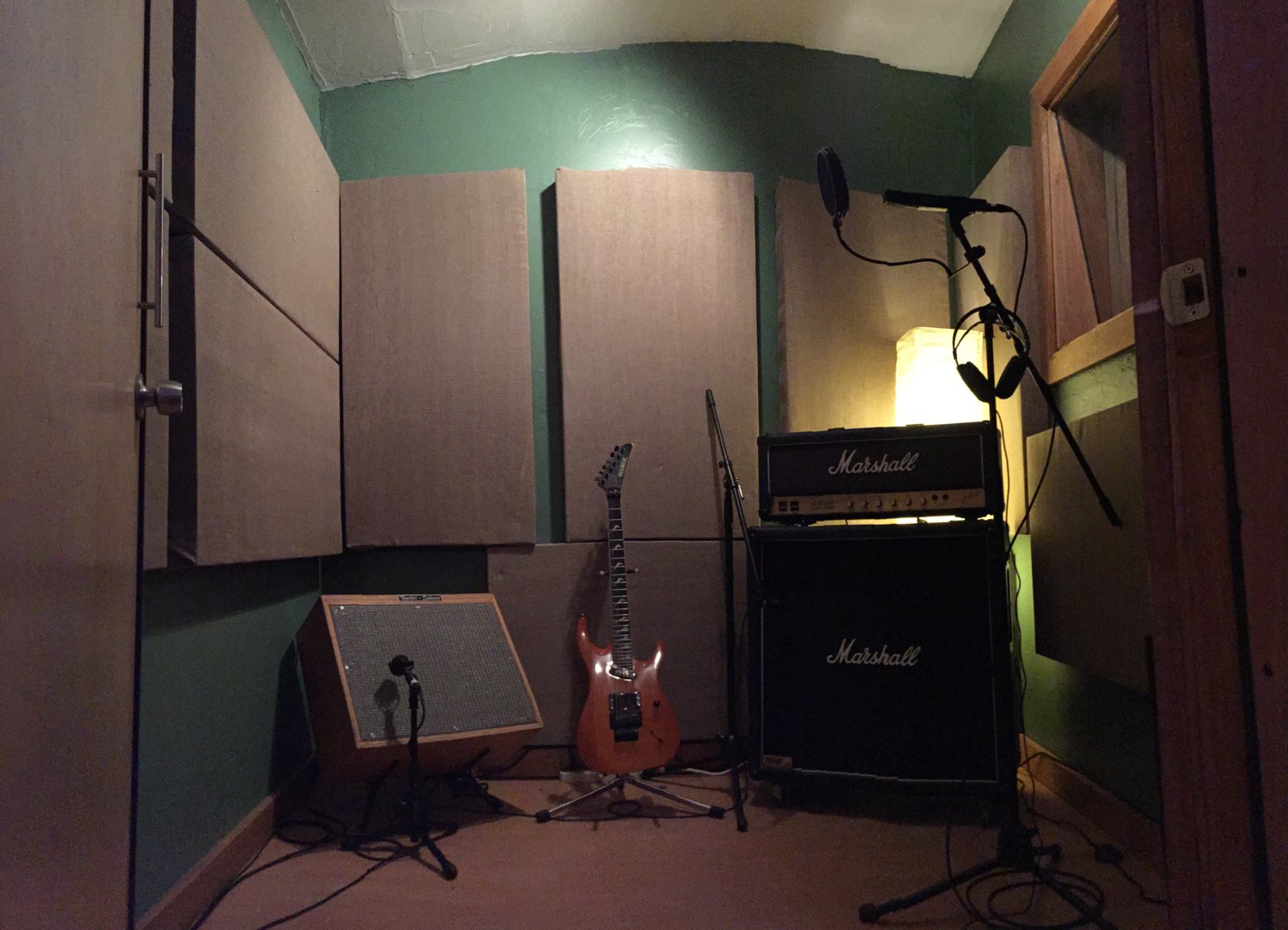
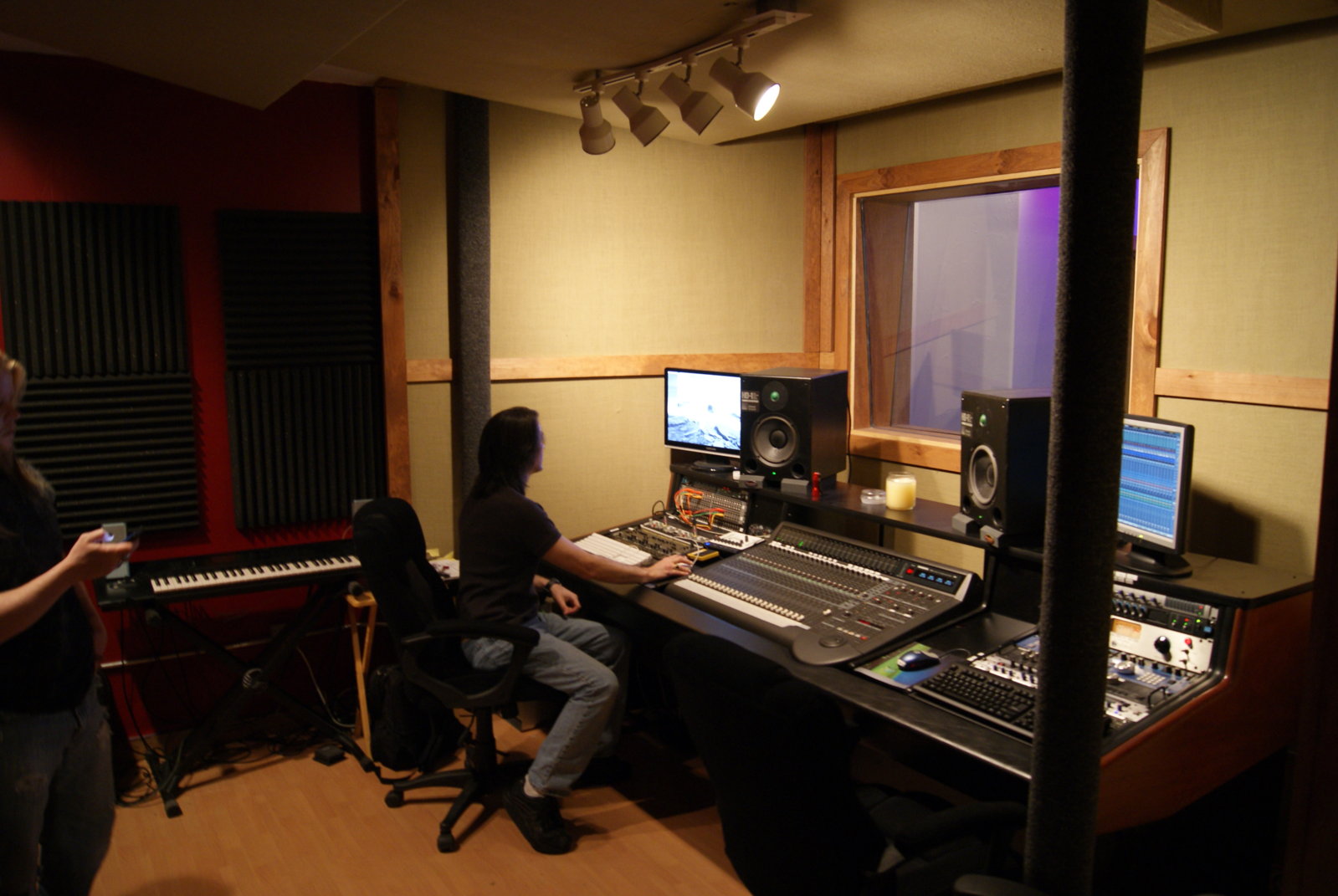
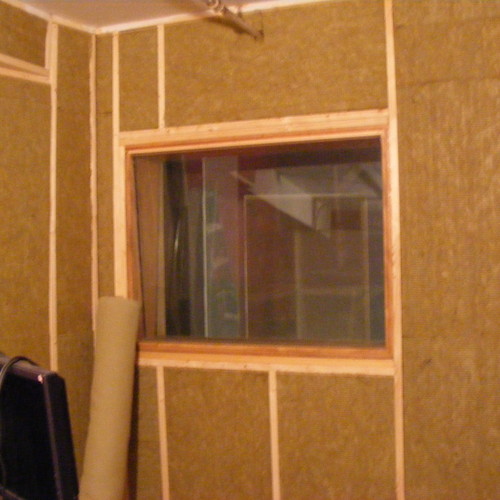
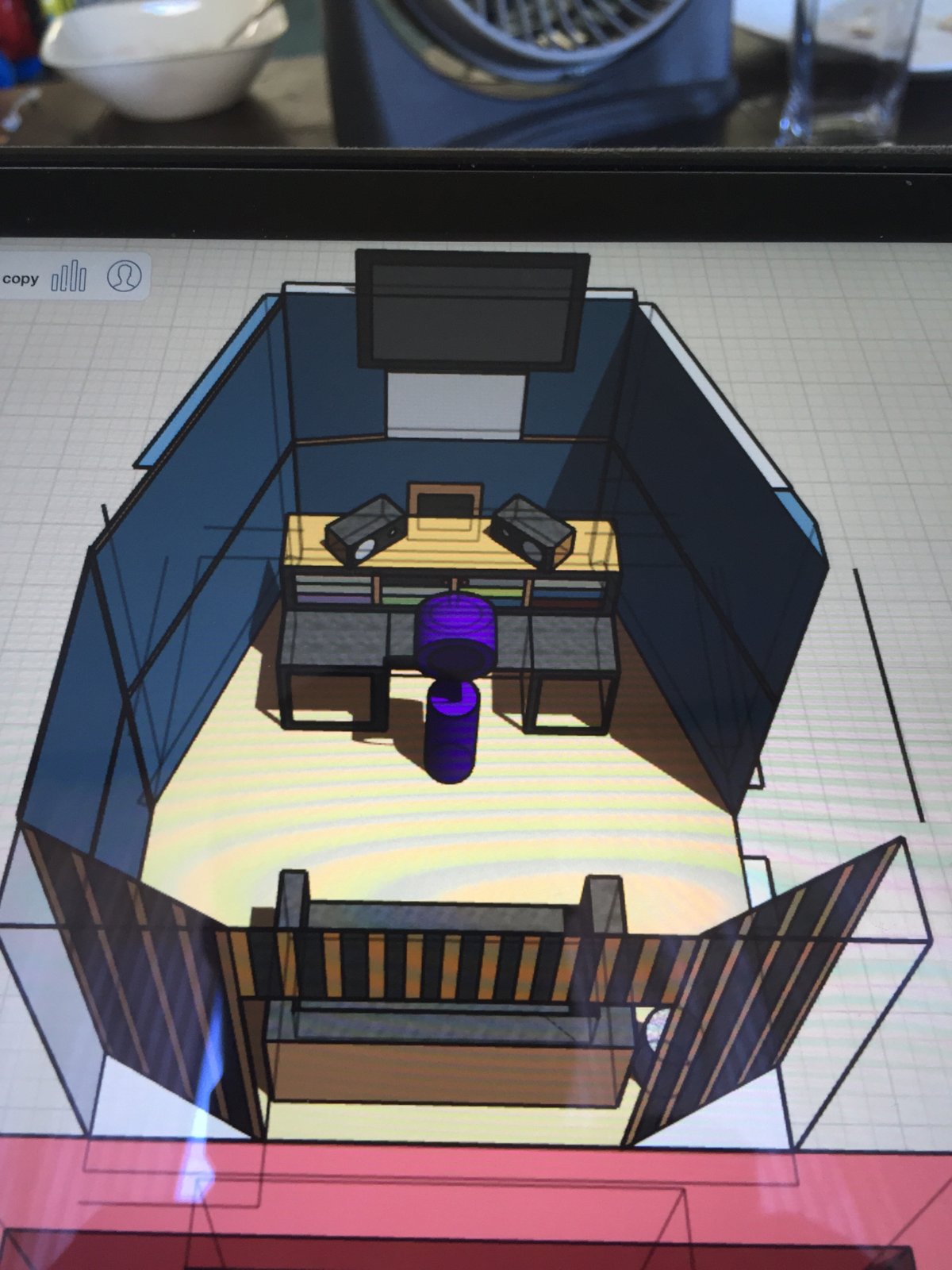
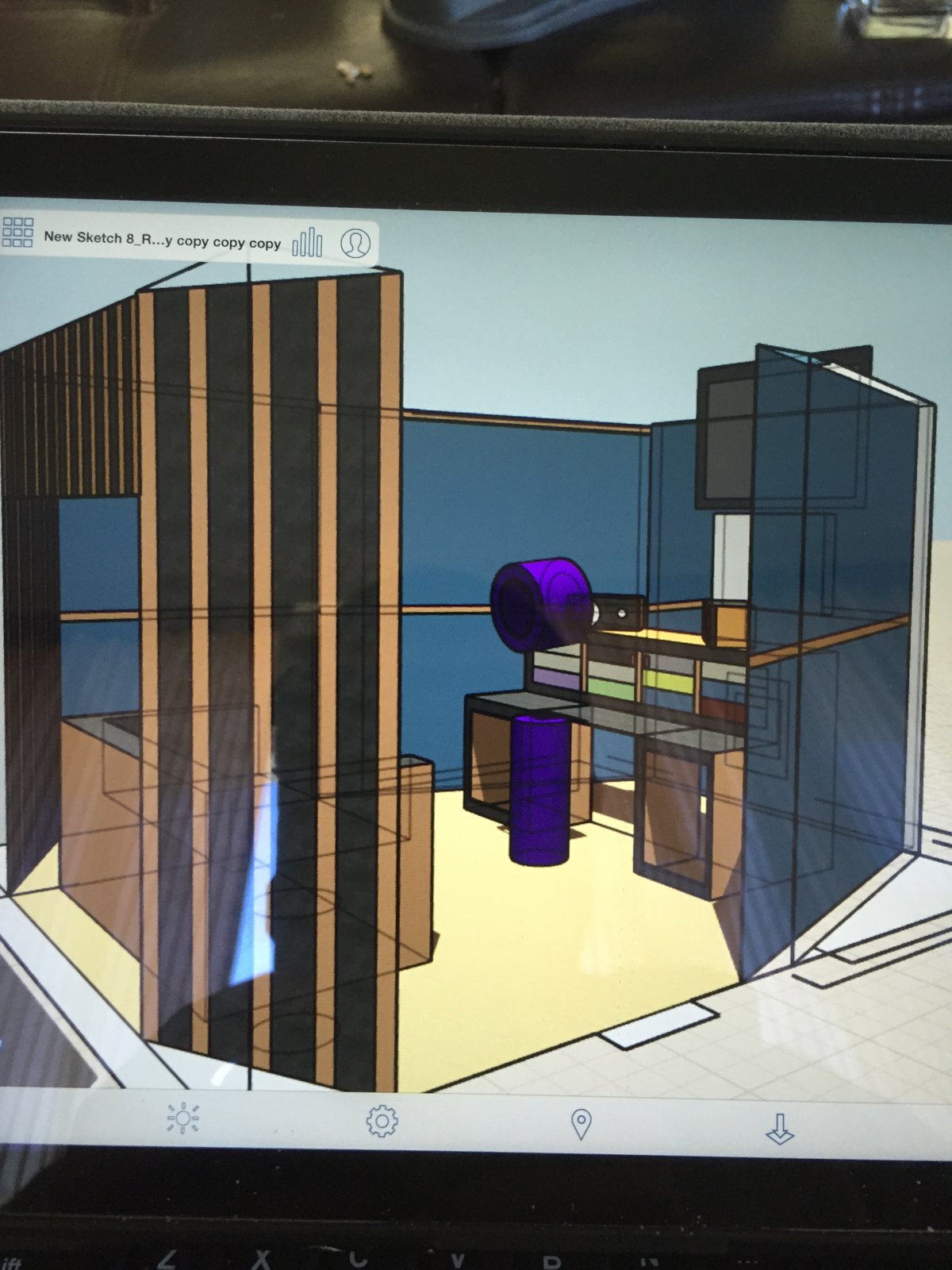
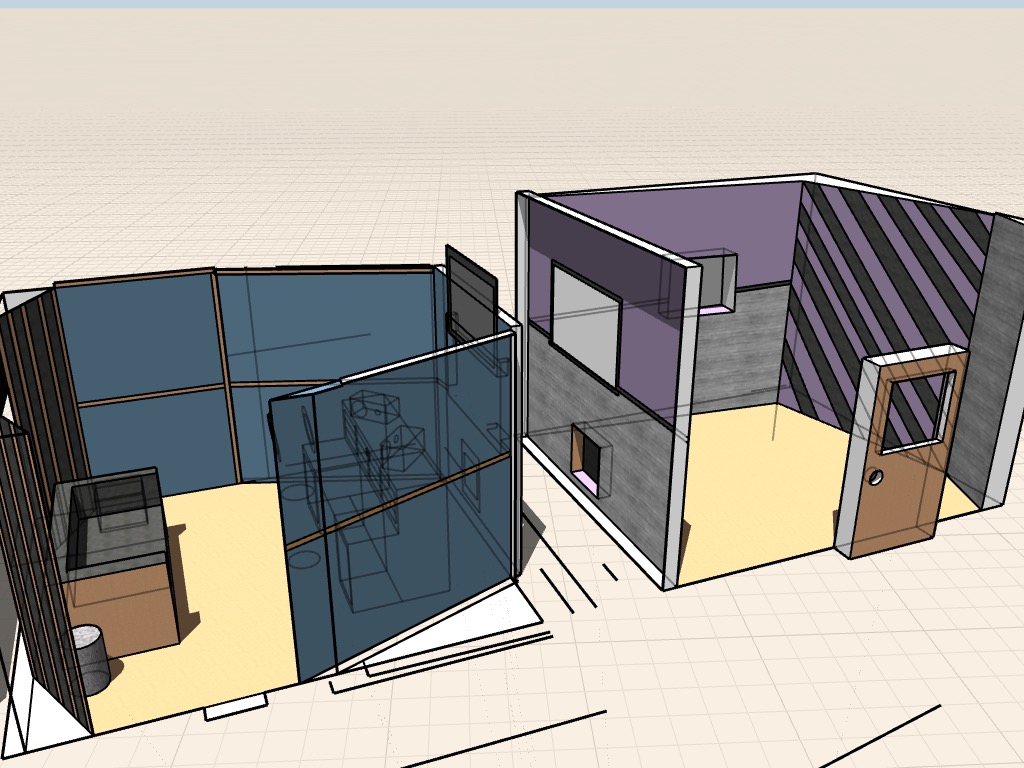

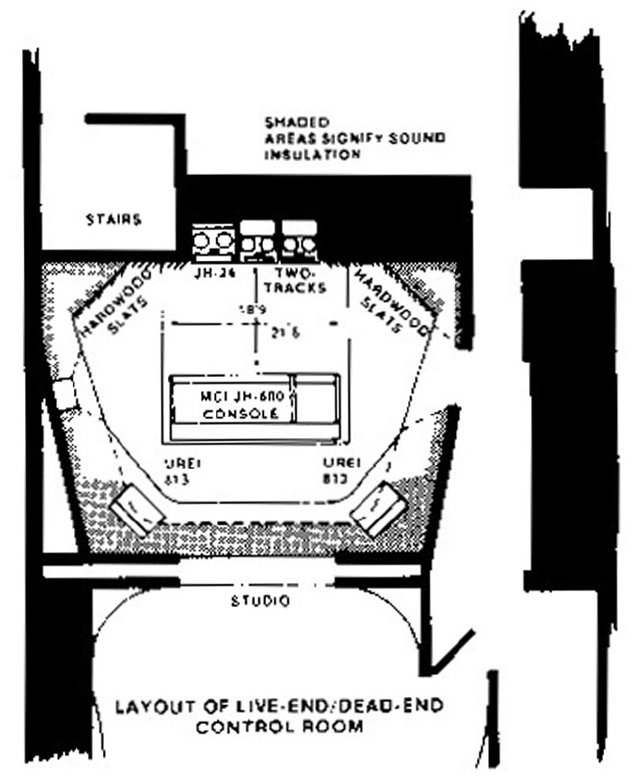
Here's my input on where to start: http://www.amazon.com/dp/143
Here's my input on where to start:
http://www.amazon.com/dp/143545717X/?tag=r06fa-20
:)